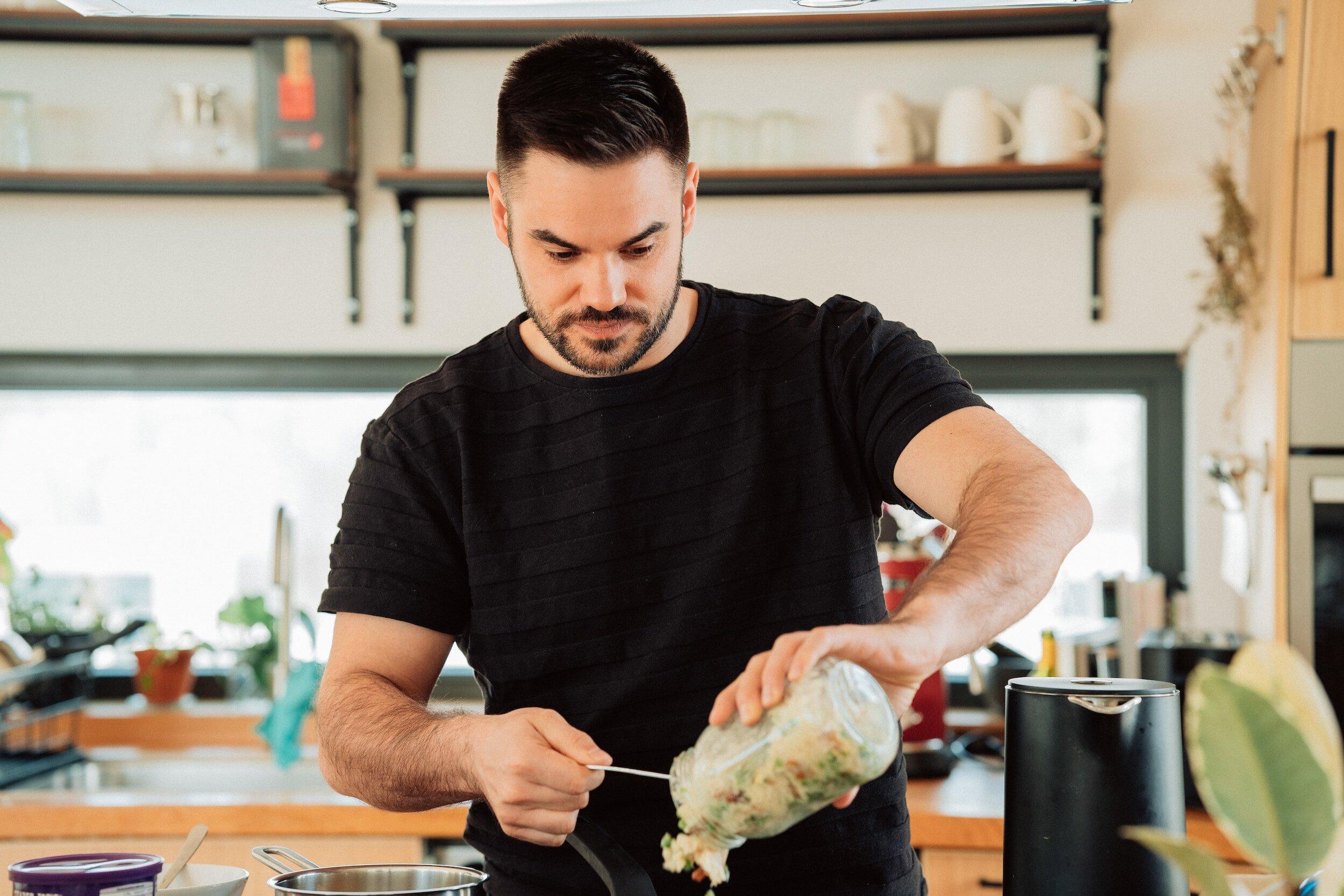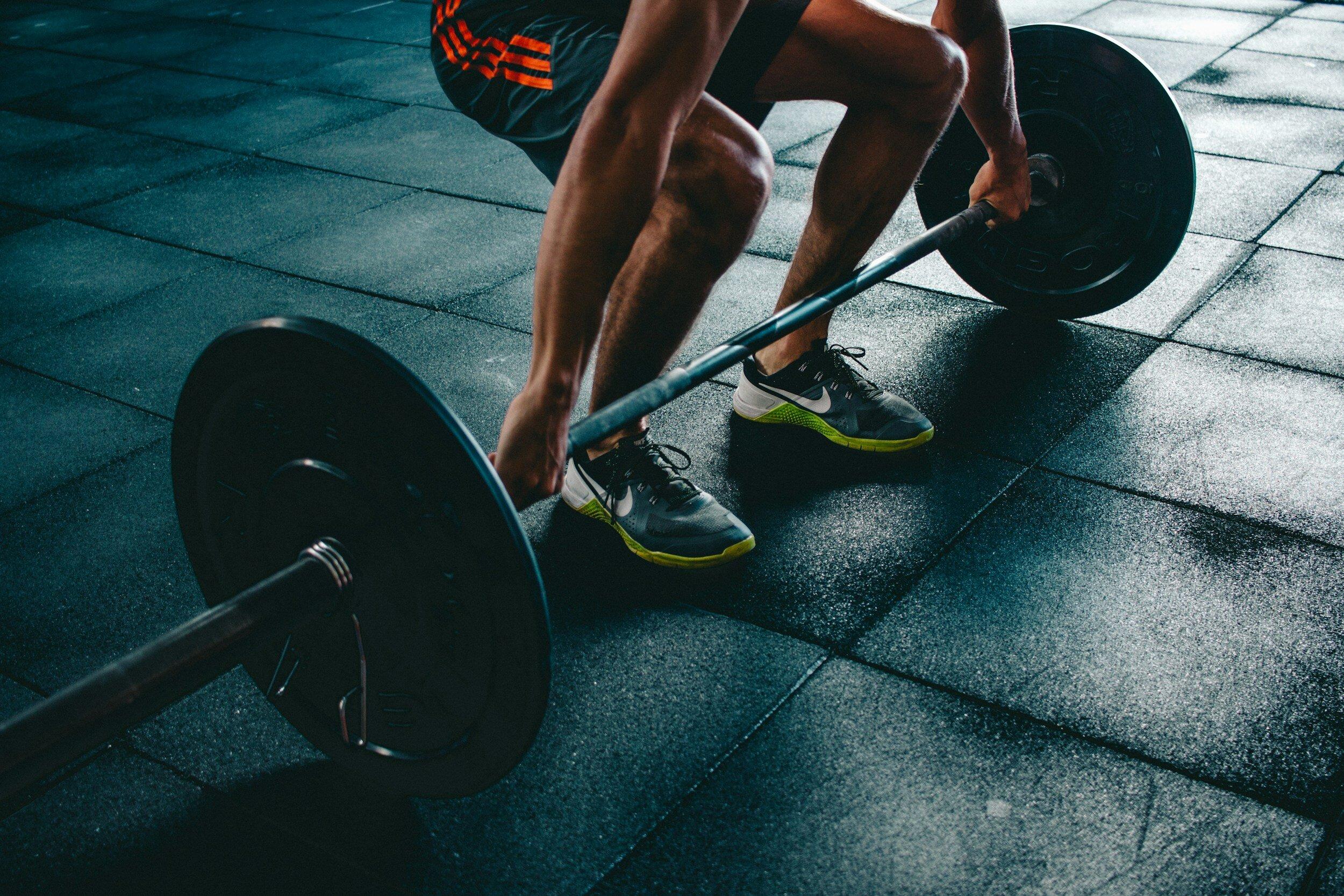How I gained 7 kg of muscle in 5 weeks (Tim Ferriss Occam’s protocol)

“Man, you look BIG!”
“Are you going to the gym?”
“What are they feeding you?”
“You look bigger, how often do you exercise?”
These are only a few of the comments I’ve been getting recently.
Why is that? Because I’ve gained 7 kg of muscle in 5 weeks using Occam’s protocol from Tim Ferriss.
But is it all muscle? Did I also gain fat? Did I lose fat?
I can’t know that because I didn’t measure it. But as Shaan Puri says…don’t let the truth get in the way of a good story.
This wasn’t a carefully planned science experiment – this was simply me trying to gain some (muscle) weight and strength in a short period of time.
And I didn’t want to spend days trying to figure out how to measure my body composition, where to do it and then do it multiple times, and thus postpone the experiment. Nor did I ever count calories.
Am I gonna spend hours every day weighing my food, preparing everything myself and obsessing over every little detail? Do I look like a retired multi millionaire with a bunch of free time on his hands?
Even if I did gain a little fat, who cares, I’ll take care of it later. But to the best of my knowledge, I gained only muscle and might’ve even lost fat – like Tim always does when he follows Occam’s protocol. Because I followed his instructions to the T, except not taking all of the recommended supplements.
Onward.
Let’s take a quick look at what Occam’s protocol is and how I gained 7 kg of muscle following it.
What is Occam's protocol
Wikipedia: In philosophy, Occam's razor is the problem-solving principle that recommends searching for explanations constructed with the smallest possible set of elements.
NewScientist.com: Occam's razor is a principle often attributed to 14th–century friar William of Ockham that says that if you have two competing ideas to explain the same phenomenon, you should prefer the simpler one.
William Ockham: It is in vain to do with more what can be done with less.
And Tim Ferriss applied this philosophic principle to weight gain, because why not:
"Occam’s protocol is a variation of a consolidation routine used by the late Mike Mentzer, who won the heavyweight class of the Mr. Olympia competition in 1979.
Here is our singular objective: to apply the Minimum Effective Dose necessary to trigger muscular growth mechanisms, and then channel food preferentially into muscle tissue during overfeeding."
-- Tim Ferriss, The 4-Hour Body
If it’s good enough for Mr. Olympia, it must be good enough for a bunch of nobodies like you and me.
You can learn all the details of this protocol in Tim’s book, The 4-Hour Body, and you can probably find a free PDF online if you're a cheap bastard.
But we can list the most important principles:
- Very short gym sessions – only 2 exercises per gym visit
- Do the exercises very slowly – for more time under tension
- Long recovery times – at least 2 days between gym visits
- Don’t eat like it’s your job – eat like your life depends on it
So here is exactly how I did it: Diet, Exercise and the Results.
Not just how I did, but how you can do it as well.
The diet during Occam’s protocol (Occam’s feeding)
Like I said, eating like it’s your job may not be enough.
If you want real results, you might have to eat like your life depends on it. Especially if you’re not used to eating a lot during the day (binging in the evening is not enough).
Take it from me. As someone who LOVES intermittent fasting and often doesn’t eat anything until 1pm, doing Occam’s feeding is like forcing a 7-year old to eat a bowl full of salad – very hard to accomplish and the kid will hate it.
So how did I do it?
Here’s a rough eating schedule I followed:
8am → Make a monster protein shake.
Protein powder, milk, bananas, frozen fruit, brazil nuts, cashews, hazelnuts, almonds, 5 pieces of Plazma (crunchy biscuits from Serbia), occasionally 1 pip of dark chocolate (just found out it’s called a ‘pip’, wow!).
How does it taste? Delicious! But it’s tough to drink, usually takes me an hour or so, because it’s so huge. Like I said, I don’t count calories, but I figure it’s gotta be at least 1000, right?
12pm → Breakfast.
Depends on what food I find at home. Usually some kind of meat and/or eggs, a salad and ideally a source of healthy carbs.
4pm → Lunch.
Usually the same as or similar to breakfast. Unless there are different types of food at home and I can pick and choose.
8pm → Dinner.
Could also be the same as breakfast or lunch, or totally different. If I get some fast food, it’s usually for dinner, and then I pig out.
This is the bare minimum.
I assume if I eat this much, I will maintain weight instead of gaining, unless I go into devour mode for dinner. For better results, I eat snacks like peanuts after lunch or after dinner or I drink additional milk. Or I add an additional meal, but that’s not realistic because of time constraints, so that’s why I try to eat as much as possible for breakfast and dinner.

Tim’s plan suggests 2 high-carb meals (all meals should be high protein), but I am not sure I ate enough carbs during this time. I definitely did eat more of them than on normal days because I hate eating carbs and try to avoid as much as possible.
But would I have experienced better results if I ate more carbs? Highly likely.
What about supplements?
Protein powder (in the shake) every day, 30ish grams.
Creatine every day. First week 10 grams, next 4 weeks 6-8 grams.
I don’t know how all this sounds to someone who hasn’t tried it, but if you think eating this much is hard….you’re right!
Eating is by far the hardest part of Tim Ferriss’ Occam’s protocol. By far, by a mile, insert any phrase you like.
Compared to eating, training is like playing basketball vs 2nd graders – too easy to even be fun.
Muscle growth exercises for Occam’s protocol
I wasn’t kidding.
Exercises – I mean actually lifting weights – are by far the easiest part of this thing.
What can be annoying is determining the starting weights and adding the correct weights for each subsequent exercise.
To simplify, you start with 70% of your 5-rep max for each exercise. And increase the weight by 4.5 kg (10 lb) or 10% (whichever is greater) for each subsequent gym visit, as long as you hit the target amount of reps (usually 7).
This sounds simple, but I suggest you pick up Tim’s book for details. However, sometimes not even the book can help you because it doesn’t account for all possible scenarios, so you’re gonna have to wing it occasionally.
Tim gives you the option to choose between free weights and machines.
First piece of advice: Choose machines because it’s much harder to do the movements incorrectly that way. It’s very easy to make mistakes with free weights. And just a small change in stance, movement or setting can result in huge perceived strength gains or losses.
Why did I say the exercises are too easy to even be fun?
Because you only do 1 set of 2 exercises for each gym visit. Yeah, that’s like barely 15 minutes in the gym and it is annoying, I must admit.
BUT STICK TO THE PROTOCOL AND DON’T LISTEN TO WELL-MEANING ADVICE FROM FRIENDS OR GYM TRAINERS!

The trainer in the gym says correct incline bench press is at 45 degrees, but Tim says you should do no more than 20 degrees for the duration of the protocol – how do you set the bench? That’s right, at no higher than 20 degrees.
All exercises are done with a 3-minute break in-between and at a very slow pace. It’s called a 5/5 cadence – 5 seconds up, 5 seconds down.
Aka take 5 seconds to very slowly push the weights, and 5 seconds to very slowly lower them. Or 5 seconds to very slowly pull the weight, and 5 seconds to very slowly release the weight.
Really simple, right? Yes, but it’s a bitch to pull it off because 5 seconds is a looooong time. Especially with heavier weights every time.
Finally, you have workout A and workout B. A has 2 exercises, B has 2 exercises.
You do workout A, take 2 days off, then workout B, again 2 days off, until you do both workouts twice. Then increase rest time to 3 days. Later increase to 4 (or more) as soon as more than 1 exercise has stalled.
I never increased it to 4 because in those 5 weeks only 1 exercise has stalled – not once, not twice, but three times! More on that later.
So which exercises did I choose?
Workout A:
- Close-grip supinated pulldown (went from 50 kg to 75 kg)
- Machine shoulder press (went from 20 kg to 30 kg)
Workout B:
- Slight incline bench press (went from 50 kg to 65 kg)
- Seated leg press (went from 70 kg to 95 kg)
Here’s my experience with those specific exercises
Supinated pulldown → Zero problems. Very easy to add weight. Was supposed to pull 82.5 kg next time, would pull it off guaranteed.
Machine shoulder press → I love this one but it was extremely hard to add weight. Second time over I did 6-7 reps of 25 kg, as expected. But the next 3 (three!!!) times, I couldn’t crack 6 reps with 30 kg. Did I not eat enough? Did not fail properly with 25 kg? Not sure what the reason was, but I assume it’s my fault and I screwed up somewhere.
Slight incline bench press → No problems after the first workout. It was weird in the beginning because I couldn’t reach target reps with my starting weight. Probably because I set the bench incorrectly and the bar was at the height of my chin instead of my collarbone, so I couldn’t lift as much. Very weird because there are no instructions on what to do if you fail to reach target reps on your first workout (which should not happen). Was supposed to lift 72.5 kg next time and would probably do it without problems.
Seated leg press → Same as the pulldown. No problems, easy to add weight. Fun bonus: if you do it correctly, your legs will start shaking. Next target weight was 105 kg.
Onward.
These were the exercises. Now let’s take a look at…
My results after 5 weeks of Tim Ferriss’ Occam’s protocol for muscle gain
This is what we’re all after, right?
Results!
I started the experiment with exactly 80 kg and ended it with 87 kg after 5 weeks.
There were some interruptions where I couldn’t eat enough, like travel. So I would probably have gained 1-2 kg more if it weren’t for those. But I don’t dwell on it – 7 kg is enough for now and I can start focusing on strength and getting ripped.
Here’s a table of my weekly progress:
| Day 1 | Day 8 | Day 15 | Day 22 | Day 29 | Day 35 |
|---|---|---|---|---|---|
| 80 kg | 82.5 kg | 84 kg | 85 kg | 85.5 kg | 87 kg |
Progress in week 1 is expected because I started eating a lot more than usual + the creatine and more water.
Weeks 2 to 4 were rather disappointing compared to the first and last one. There was travel, I didn’t feel well on some days and didn’t eat more than the bare minimum as outlined in the previous chapter (3 full meals + huge shake).
And then I decided to pig out during the last week. I was eating extra hard the first 5 days and slightly lowered my intake on the 6th day, so that I can ensure a smooth transition to eating normal again during the weekend, instead of crashing into it from Sunday to Monday.
In short, the results after 5 weeks are:
- 7 kg weight gain. Probably all muscle or most of it. Possibly also lowered fat.
- Definitely some strength gain (almost 50+ % on all exercises!).
Closing comments
So is it worth it?
How hard is it?
Would I do it again?
Actually I already tried doing it multiple times. The first was an abysmal failure. The second was good, but I was probably still doing a bunch of things wrong. And this was the third attempt, the most successful one.
I would do it again when I want more lean muscle mass, but no reason to do it anytime soon.
The biggest reason: TIME!
Doing the exercises is always enjoyable and even takes annoyingly little time (it always leaves you wanting more). But man, oh man, the eating…
In order to eat enough to experience lean weight gain and for your muscles to recover, you have to make eating your job. And I mean it. Protein shakes, 3 full means, snacks + gym every 3-4 days – all this easily takes up almost half of my waking hours.
Every single time, I barely get in the flow of working or doing something productive, and I have to think about eating again. It is extremely annoying, to be honest. I really HATE the eating part.
But Tim and Neil (Strauss) were right. Increased protein synthesis does dramatically increase your sex drive, especially in the first week or two. Between that and eating all the time, it’s hard to focus on work.
And yes, eating more becomes easier over time, as your gut bacteria and enzymes adapt to increased food intake. After the first week, you might notice getting hungry all the time if you take a long time between meals.
Anyway…
I wrote this post because I couldn’t find many people online who wrote about trying out Tim Ferriss’ Occam’s protocol. I wanted to read more about it from real people, but there is very little out there.
So I hope this helps someone who considers giving it a try. Trust me, it works if you follow the steps.
After all – I spent more than 3 hours writing this + months of trial and error!
Sincerely,
Filip Stanojevic – Currently a 87-kg beast